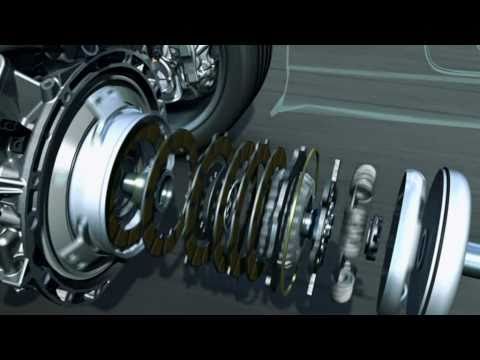Mercedes-AMG has unveiled the mighty E63, and it only comes with an AMG Speedshift MCT transmission. Some of you are probably wondering what’s behind the marketing name chosen by Mercedes-Benz’s performance division.
Mercedes-AMG's MCT Transmission Explained In Layman's Terms
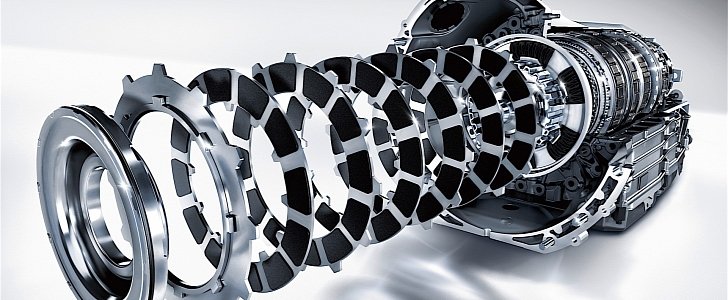
Evidently, there is no other “Speedshift” transmission in the world, because the name itself is a trademark of the German company. Behind the fancy name lies a mixture of two transmission types — a conventional automatic and a manual unit.
Do not be confused by the comparison with a manual, Mercedes-AMG’s nine-speed gearbox is an automatic unit, but not one with a torque converter.
The Speedshift MCT transmission from AMG is not a dual-clutch unit either. At this point, some of you are presumably wondering what kind of sorcery drives the cars that come with the AMG Speedshift MCT gearbox. Jeremy Clarkson might reply that black magic is involved, but we like to call it engineering.
In other words, the Speedshift MCT unit from Mercedes-AMG, is a multi-clutch automatic gearbox. Instead of a torque converter, like conventional automatics, it possesses a “clutch pack,” which includes multiple clutches placed together and controlled separately. It is easily differentiated from dual-clutch automatics because it has a single input shaft
It is currently available in seven-speed and nine-speed versions, the latter being confirmed last December and introduced on the new Mercedes-AMG E63. Common uses for Multi-Clutch Transmissions
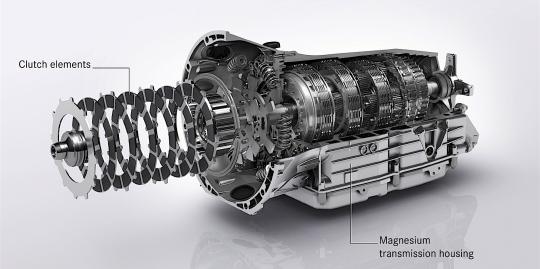
These multi-clutch transmissions are usually operated in heavy-duty applications, where an optimal response is required, along with the need to handle a bundle of torque.
It is important not to confuse multi-clutch gearboxes with multi-plate clutches. The latter term refers to the clutch itself, which can be engaged in a manual gearbox.
Multi-clutch transmissions are used by various racing cars, but also in heavy machinery. The advantage of this technical solution is using less space for something that can handle more torque and power, all with minimum slip. Reaction time is also an important characteristic, which is significantly improved when compared to a torque converter.
Motorcycles are known for their use of multi-plate clutches for this particular reason. The torque and power requirements cannot be met with a conventional clutch, because it would take up too much space, when several plates that are smaller form an efficient package.
Most motorcycles employ wet clutches, which sit in oil for cooling purposes. However, some motorcycles have dry clutches, and Ducati is most known for the sound these units make at idle.
Meanwhile, most cars have dry clutches, while few have employed wet clutches over the years. Dual clutch transmissions have successfully used both solutions in recent years.
Other applications for multi-plate clutches involve differentials, which operate in a similar manner to that described above. In short, a limited-slip differential has multiple clutch plates inside, and they can connect or disconnect axles depending on load.
This used to be set mechanically and remain at a fixed preload, but modern technology has allowed engineers to control them electronically for better operation.Mercedes-AMG Speedshift MCT 7 Transmission
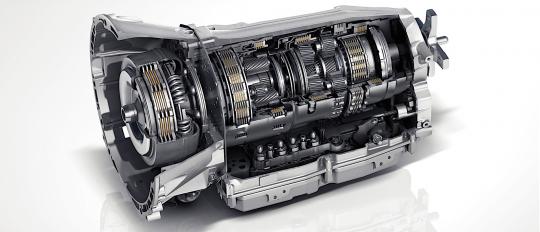
The seven-speed MCT unit from Mercedes-AMG was the first of its kind introduced in a production automobile. It was launched on the 2008 Mercedes-Benz SL 63 AMG, and it was praised for its power transfer capabilities and quick response times. From the beginning, it came with four driving modes, a Race Start function, and an automatic double-declutch feature.
Just like we explained above, the unit was employed instead of a conventional torque converter-based transmission. The idea was to provide the fastest response time possible with the largest torque capability.
A regular twin-clutch unit could not handle the level of torque developed by Mercedes-AMG’s V8 units, so this solution had to be designed to obtain maximum performance.
The innovative component introduced by Mercedes-AMG’s Speedshift MCT-7 unit was a “wet start-off clutch,” which operated in a sump to aid cooling and longevity. The component has a low rotational inertia that allows quick response times, which cannot be matched by liquid-filled torque converters.
MCT stands for Multi-Clutch Technology, and those clutches are the sole executors of gear changes. In the Manual mode, the gearbox managed to shift gears in just 100 milliseconds. That is incredibly fast, but the unit also had a comfort mode for day-to-day driving, as well as two sport modes.
The first of them was 20% swifter than the Comfort mode, and the second Sport mode was 20% prompter than the previous. Meanwhile, the Manual mode is an extra 10% quicker than the S+ mode, which was the most rapid automated operating mode of that transmission.
The AMG Speedshift MCT 7 unit is even lighter than the AMG Speedshift 7G-Tronic unit, which is employed in other products of this division. The MCT unit weighs 80 kilograms, and it can operate at engine speeds of up to 7,200 rpm. Only the high-performance vehicles from the AMG line have been fitted with this type of transmission.AMG Speedshift MCT 9
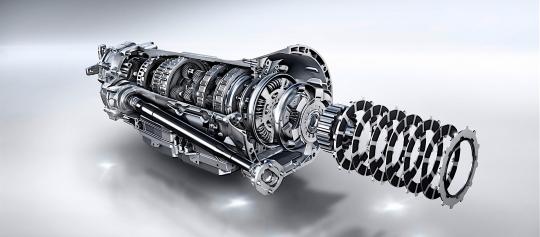
The latest Mercedes-AMG E63 comes with a nine-speed automatic transmission. Since this article is about multi-clutch transmissions, you can imagine that the car has a place in this list. Evidently, it does have a spot, because it comes with the world’s only nine-speed multi-clutch automatic transmission.
The unit is more than just adding two gears to the AMG Speedshift MCT-7, because the engineers had to modify numerous hardware components to suit the two extra gears. Furthermore, software changes and calibrations had to be performed to ensure optimal op
eration.
The result is a transmission that can provide “extremely short shift times,” which were not released by Daimler at the moment when the Mercedes-AMG E 63 was officially announced. We expect to find out more about it as the Mercedes-AMG E 63 reaches the market.
Just like the unit that came before it, the AMG Speedshift MCT 9 can perform multiple downshifts at once with a fast operation. The double-declutch function remains present, as does the launch control feature (called RaceStart in full caps), which is now easier to activate.
A significant addition is the introduction of a coasting function, which opens the clutch when the car is driving at speeds between 60 (40mph) and 160 km/h (99mph) without any throttle action. The result is that the vehicle saves fuel without any effort from the driver.
